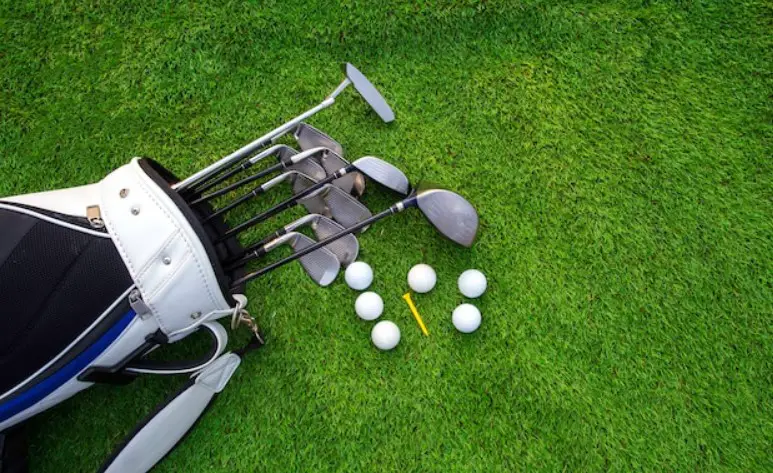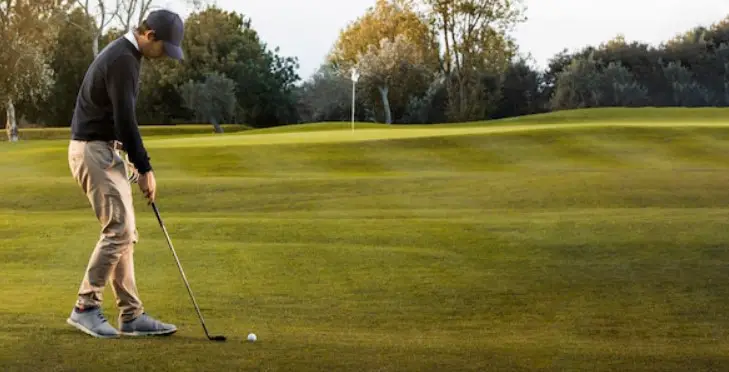Last Updated on October 14, 2023 by Alex PT
No professional golfers on tour use clubs with wooden heads. The last major tournament won with a wooden driver was the 1993 Masters by Bernhard Langer. By 1995/1996 almost all the players on tour had moved to “metal woods.”
Categories of Golf Clubs with Wooden Heads

Woods mainly falls into two categories, “Drivers and Fairway woods”, with a traditional set of clubs involving a driver and one or two fairway woods (usually numbered 3 and 5). Many recent sets tend to include hybrid clubs, which integrate some of the facets of wood and an iron, to replace the 5 wood and low-lofted irons. During the year 2010, golf club makers popularized the notion of woods and hybrids that can be modified by the player to provide several settings, such as lofts.
The driver has become highly suited and specialized for practice off the tee by combining a large head and a fierce blowing look to increase the “spot” that delivers the best results and outcomes. It is very possible to whack a modern driver off the fairway turf or golf course, but it demands an elevated and outstanding degree of mastery and skill with a particular percentage of luck considering the lie of the golf ball.
Certain 2-woods are available with an identical deep-faced layout but an increased loft, which can be utilized in circumstances when a player needs barely less distance than their regular drive, or must make a driver-distance shot from the rough or fairway. Nevertheless, 2-woods of any type are not common, as a player in these conditions will always go for the 3-wood, and conserve the space in the bag for a limited specialized club like the “wedge”.
What About Drivers?

The driver has emerged as the most costly single club of the contemporary club set, primarily due to the increased emphasis placed on a player’s drive distance; an extended drive gets the ball nearer to the green in limited strokes enabling better chances. While drivers are accessible as cheaply as $20, these are mostly auctioned to secondary players; the cost range for drivers sold to adult amateur players is normally between $130–$500, accompanied by the custom-made clubs for high-end players and tour professionals amounting to thousands of dollars(in the case of prototype clubs supplied by club makers. As a comparison, the top edge of the retail drivers ($500) is identical to the rate of a full excellent conformed rack of irons, and the second most costly single clubs, the “putter” and the fairway woods, generally vary from $100–$350, quite expensive right? that’s because you pay for everything.
Frequently Asked Questions About Wooden Golf Clubs
What Wood Are Golf Club Heads Made Of?
Golf clubs are made up of wood with the shafts made from ash and hazel and the club heads being made out of tougher wood, for example, applewood, holly wood, beechwood, and peer wood.
What Were Wood Drivers Made Of?
Persimmon wood was exploited for wood club heads because it’s tougher than maple wood or oak wood and it is also heavy.
What Are The Four Different Parts of A Club Head?
The head of a golf club has numerous parts: the Hosel, which is where the head connects to the shaft; the Face, this part is responsible for striking the ball; the Sole, which is the closest to the ground; and the Back, this is on the angle opposite the face
Conclusion
If you are having trouble getting a good golfing club or putter for your game in the sense that it won’t damage your green, I strongly propose the “Persimmon fairway wood club” because they get the ball in the air and cover the distance you desire.
References:
https://www.quora.com/Do-any-of-todays-professional-golfers-use-clubs-with-wooden-heads

Hi! I’m Alex PT. I hold a Bachelor’s degree in Sports Management from Indiana University and have over seven years of valuable experience working in a Sports Event Management Company. I founded SportBlurb with the passion for bringing you the latest, most insightful, and engaging content in the world of sports. So, whether you’re a die-hard fan or want to stay informed, I’ve got you covered!

